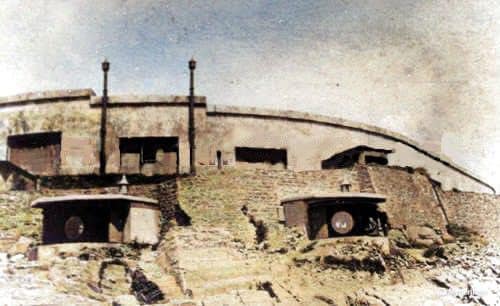1891 Census Statistics for the UK and the Three Towns
The census showed the population for Plymouth had increased to 84,179 up by 14.1% compared to 1881. This was higher than the England and Wales of 11.65% but the rate of increase had slowed and this was less of an increase than any of the previous censuses. It also reflected the general drift from rural to urban areas which moved from 70% to 75% but like the increase in population it was slowing. The housing stock increased by just under 2,000 to 10,156. In Devonport the population was up 11.8% to 54,736 with just under 700 houses added to make a total of 5,097. Stonehouse remained roughly static with a population increase of under 500 to 15,502 and an additional 70 houses built to make 1,451. The Three Towns was the fourth most overcrowded town or city in the UK out of the 33 counted amongst the Great Towns.

Overall in the UK Army numbers had increased by 19.5% making 222,859 in total and overall Police numbers had gone up 22.8%. In Plymouth there were 103 men including 5 Inspectors, 9 Sergeants and 88 Constables which was under the national average. Doctors, Surgeons and Teachers numbers all increased by percentages far above the increase in population. The other profession that grew was photography and it’s associated suppliers as it became more affordable and popular. Women were mainly employed in teaching, over 74% of all teachers were women and Domestic service where they made up 93% of the workforce that employed 8.6% of the total workforce, some 1,900,000 workers.
The Routledges in 1891
Before looking at the changes over the 1890’s just a quick reminder from the previous blog of where the Routledge dynasty starting with Richard who was a Gunner on Drake’s Island in the 1851 census are now. Their story shows how important family could be in providing a social security net for each other. The now widowed matriarch Mary is living with her Son-in-Law Charles Maynard, a widower himself after Mary Jane (Richard and Mary’s daughter) died, at 21 Benbow Street in Stole Damerel, Devonport. There are 4 of Matriarch Mary’s children with them, Frederick, 27, who is working as a painter, Rosina now 23 who is helping run the home, 21 year old Charles who is working as a Caulker – a shipyard trade – and Lilian Violet who at 13 is still a scholar. There are also Charles’ children by Mary Jane, Ethel aged 10 and 6 year old Violetta who are also both scholars.
William (Matriarch Mary’s eldest) now a mineral oil salesman lives at 23 St Levan Road in Stoke Damerel with Caroline his wife and 9 of their 10 children. The eldest 18 year old Thirza is working as a domestic servant, Alfred (14), Blanch (12), Sydney Robert (10), Claud Hamilton Percy (8), Albert R (5), Ida (3) and Emily (2) are all scholars whilst Jack Dart is only 5 months old. William John their 16 year old second born has joined the Navy and is in Training on HMS Impregnable in Devonport and living in New Granby Barracks when ashore.
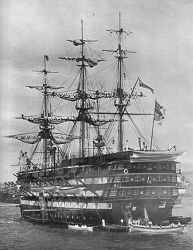

Mary Ann, the widowed wife of John R (Matriarch Mary’s second born), is living with her two children Beatrice and Edith at 13 George Street renting one room of the six roomed house along with Agnes Beaglehole’s family who use 4 of the rooms. Agnes is Mary Ann’s sister and also widowed. William Riddick a RN Petty Officer rented the sixth room for his family. Mary works as an upholsteress and the two children are at school.
Maud and her husband George Mounstephen, still in Wilton Street, have had their first child Hilda Maud who is 10 months at the time of the census.
Annie, the sixth of Matriarch Mary’s children is in India with her husband Thomas who is a schoolmaster with the First Battalion Hampshire Regiment. Their first child Leonard is now 3 and was born in Secunderabad (also spelt Sikhunderabad). Both Leonard in 1888 and Annie in 1889 then aged 31 were baptised at Trimulgherry (Tirumalagiri) a locality in Secunderabad.

Albert Thomas, Matriarch Mary’s eleventh child is in Kildare, Ireland by working as a builders clerk with a building firm. It was a large military town so it is possible Albert was working for a contractor at a Barracks or fortification in Kildare.
The International Situation – The Manipur Expedition
The United Kingdom was mainly involved in consolidating the colonies in Africa and policing actions throughout the Empire. Manipur was a British Protectorate with a puppet ruler in place. It is currently in India but had changed hands previously between British India and Burma (now Mynamar). The Manipur Expedition in Burma lasted less than a month in 1891 to put down a Palace Coup that was a locally popular uprising and declared independence from the UK. The expeditionary forces took around 6 months to assemble but the coup was put down within a month of the columns arriving in Manipur.
Another Baby, Number 11 for William and Caroline
Not long after the 1891 Census was taken Caroline gave birth to a baby boy she and William christened Percy Charles.
Annie and Thomas Ferris have their second child
The couple were still in Trimulgherry, India with the 1st Hampshires when they had a baby girl they christened Dorothy.
Contracts for Builders and Straw and the last use of the name St Nicholas Island
There was still no Army Logistic Corps buying in and then supplying the Army with stores and supplies. Everything was put out for tender to the local commercial market. Most building and repairs although supervised by the Royal Engineers were carried out by civilian builders as the majority of the Sappers were used on construction tasks throughout the Empire. Two tenders appeared in March one calling the Island St Nicholas and the other Drake’s. This shows the name change was gradual with Drake’s becoming used more and more as the century had progressed. The last time St Nicholas was used was 1899 after that all documents referred to the Island as Drake’s Island. There was no official renaming ceremony or parade to mark the renaming that I can find.
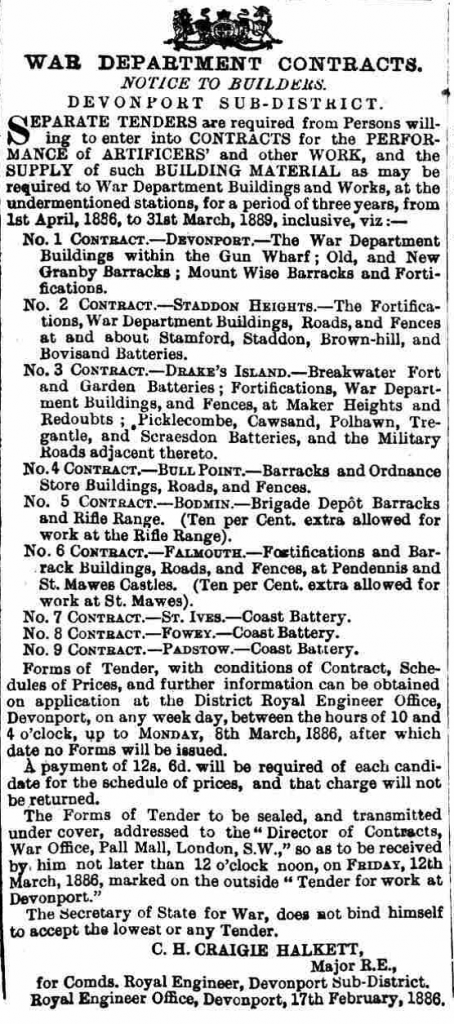
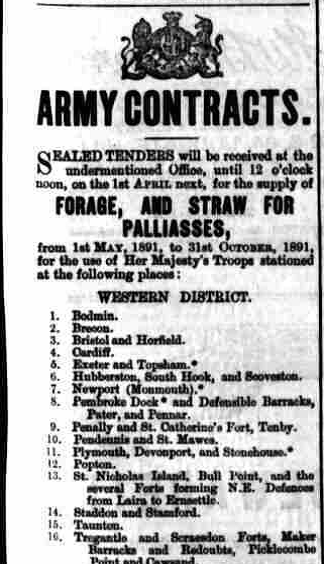
Coastal Artillery Reorganises
The main change was the abolition of the short lived Coastal Brigades and their absorption into the military districts making Western District now responsible for the Island. The Batteries were also renamed Companies. The Island would still be garrisoned by regular soldiers during peacetime with the Artillery Militia taking over wartime duties. The Militia still exercised annually on the Island. For the Gunners it was just another of a long line of reorganisations at the command level but for the soldiers on the ground it changed little apart from the name of the Unit. For those involved in command and supply chains it did change the Headquarters you reported through but the effect was marked at Brigade and Divisional level rather than Regimental level and below.
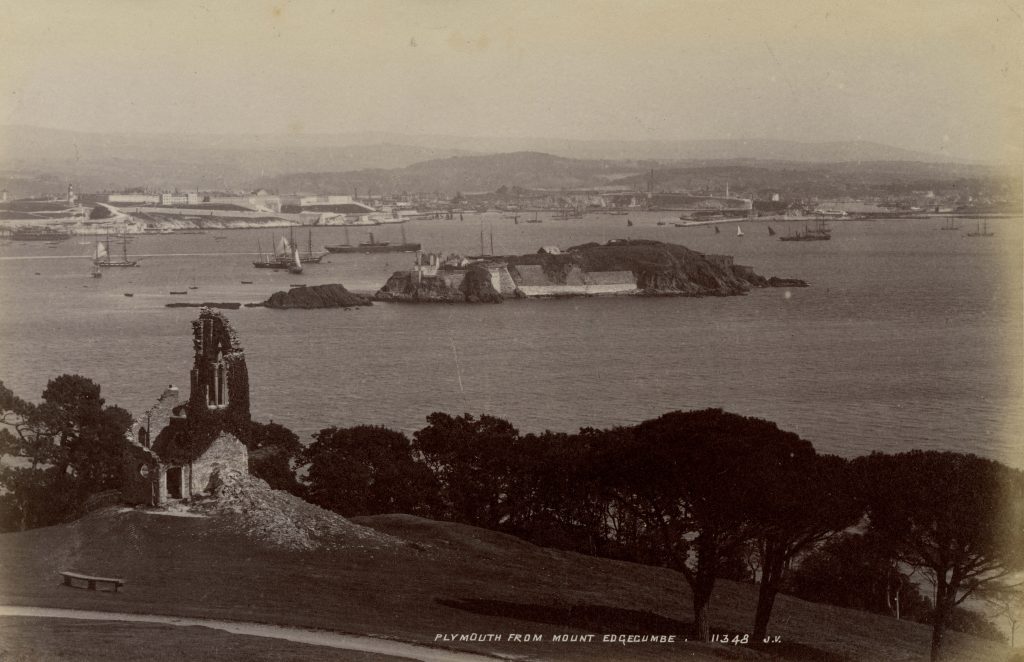
Another Island Baby
17th May saw Alison Elizabeth Payne come into the world, the 36th recorded birth on the Island. She was born to BSM Charles Sampson Payne and his wife Annie. She was baptised, like many other military babies in St Katherine’s Upon the Hoe Chapel in the Citadel. Charles retired soon after having been promoted to RSM and by the 1911 census the family settled in Gosport. Alison met and in 1917 married LCPL Frederick Turner of the Army Service Corps in St James’ Parish Church, Portsmouth. The couple settled in Portsmouth and had a son they christened Frederick in 1919. In 1939 Frederick Snr is a lecturer in Motor Mechanics at the Municipal College in Portsmouth and Jnr, now 20, is a qualified Motor Mechanic. Alison passed away in 1961.
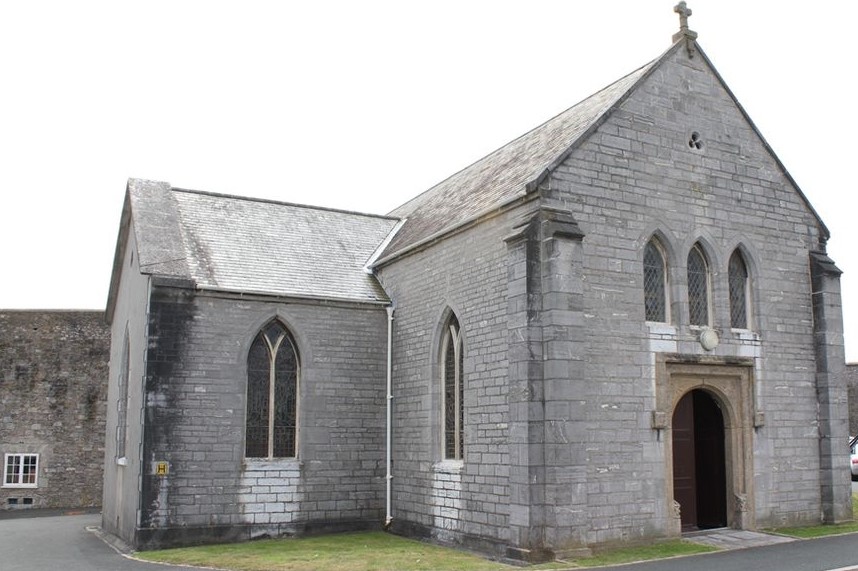
Island Cricket Team
A Cricket team had been formed on the Island by 1891. They certainly played at least two matches against Paignton School. As there wasn’t really enough room on the Island they played their home matches at the Citadel. As there were only a few Officers on the Island, three in the 1891 census, it seems the team was drawn from all ranks.
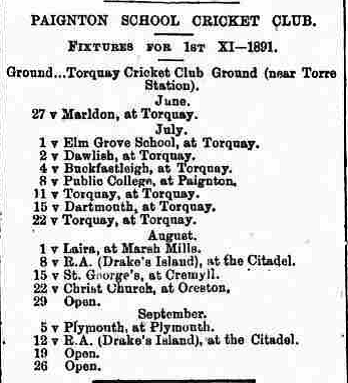
Gunner Harris Goes Missing
In September Gunner James Harris was sent off in the Island Boat to the Ordnance Depot at Bull Point up the Tamar to get some stores. He didn’t return and the worst was feared. However it appears James had missed the Island on his way back and then missed the Breakwater not making landfall until he got ashore near Startpoint, 27 miles down the Devon Coast, 48 hours after leaving for the Island. It took him another day to get back to the Island. It is not clear if James was under the influence but it was not unknown for soldiers for a beer or three!!
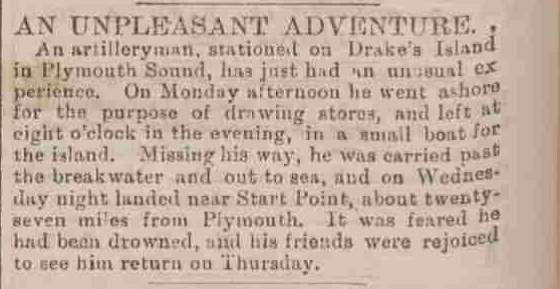
Island Canteen Examined
Since the earliest Garrisons there had been a Sutler or later Canteen Manager on the Island. Indeed there was a Sutlers store allocation in the old Tudor Barracks completed in 1602. By now the Canteen was licenced and also acted as a general store. However the Civilian Manager, John H Cross at the time and his family who would help him run the store were all under Military Law. The goods they sold and the price would be controlled to an extent by the Military. The tenancy came up every 3 to 5 years and was advertised in the local papers. A Board of Officers would examine the canteens in their area of responsibility for the quality and price of their goods from time to time to make sure they conformed to the parameters laid out by the military. One such inspection took place in October.
Free Soup in Devonport for the Poor
Free soup was made available to the poor of Devonport at 45 Granby Street by the Devonport Soup Society. There was also a Blanket Society Depot in the same building. There had always been a number of charities providing soup and essentials to the poor in the Three Towns and unfortunately there is still a need now and the Plymouth Soup Run Charity has been running for over 20 years providing not only food but other basics such as sleeping bags to rough sleepers and others 365 days a year. Sunday tends to be their busiest day with between 100 and 120 people supported on that day alone.
Drake’s Place Reservoir Opened
As the population and demand for water increased work started in the autumn of 1890 on the reconstruction and enlargement of the Drake’s Place Reservoirs. The reservoir was opened by the Mayor, Mr J T Bond, in a small ceremony in 1891.
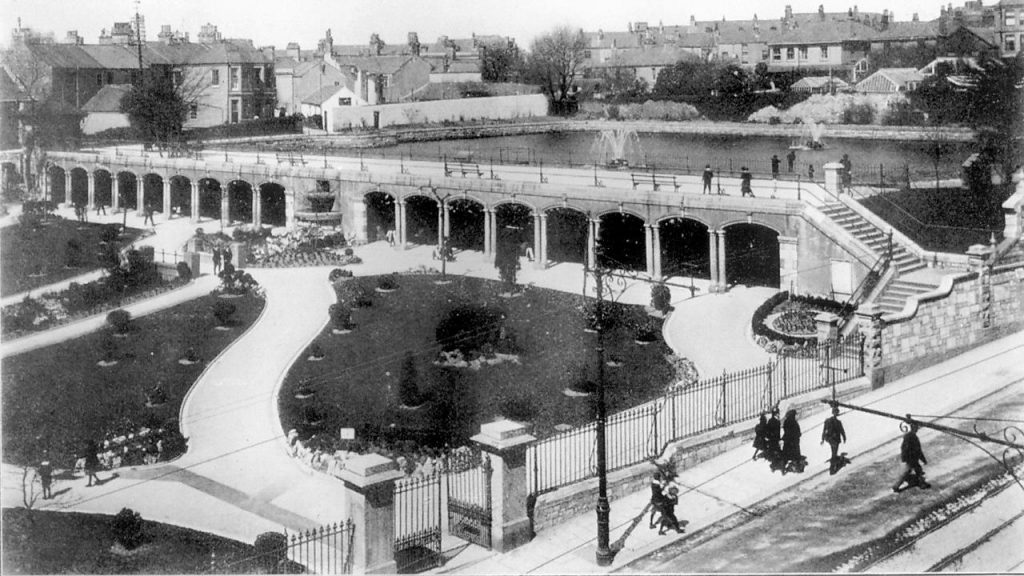
1892
William and Caroline have Baby Number 12
Caroline has a baby girl and the couple christen her Daisy
Captain Henry Bowden Gundry RA assumes Command on Drake’s Island
Henry was from Dorset, went to school at Dulwich College in London and enlisted in the Royal Artillery in 1874. The majority of his early career was spent up north in Scotland and Durham, He had been promoted to Captain in 1885 and was posted from Northern Division RA where he was serving as the Adjutant to a Militia Artillery Regiment. After his posting on the Island he married Elizabeth Hodgson, a Hartlepools lass, in Pembroke in 1897 by which time he was a Major. Henry was either still serving or had volunteered for service at the outbreak of World War One, something many retired servicemen did when the War broke out. Henry had been promoted to Lieutenant Colonel when he unfortunately died of disease in 1916 whilst still serving.

Three Island Births in 1892
Milly Cocking Born on the Island
Milly was the third of seven children born to Sgt Henry Cocking and his wife Elizabeth. When Henry was discharged in 1894 the family stayed in Plymouth living at 14 Riga Terrace. By the 1911 census Milly is working as a live-in domestic servant to the Archer family in Plymouth. A year later she marries Frank Simmons, an upholsterer in the parish church of St Augustine, Plymouth. They have three children, Frank Jnr in 1913 and Henry in 1918 who both become Civil Servants and Marjorie in 1919 who later marries Howard Aykroyd. They are all living in Leighton Road during the 1939 Register.
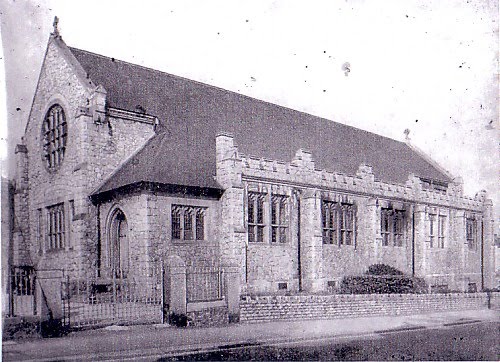
9th April Alice Somerville
The fourth child of the Master Gunner Ralph Somerville and his wife Charlotte, Alice had a brother Harry born on the Island two years later in 1894. The family were posted from the Island to Aden where Charlotte died in childbirth or not long after having given birth to their sixth child Wilfred. The family were then posted back to Dover Castle and after Ralph was discharged the family moved to Teddington where Ralph worked at Hampton Court Palace. During the 1911 Census Mary Brown, Charlotte’s sister so Alice and Harry’s Aunt is living with them as the Housekeeper.
3rd June Caroline Ann Cross Born
Caroline was the daughter of the Canteen Manager John H Cross and his wife Selina. She was their fourth child, By 1901 John had passed away and Selina working as a Laundress and her older Brother Edward working as a Cellarman are supporting the family who are living at Clarence Street, Plymouth. The family have moved to Park Street by the 1911 census and now Caroline is out working as a factory Skirt Hand in the rag trade. Caroline meets and then in 1921 marries Francis Goodwin, a printer, in Charles Church. They have one son, another Francis who follows his father into the print trade. The family are living at Stuart Terrace as World War Two breaks out. Caroline passed away in 1977.
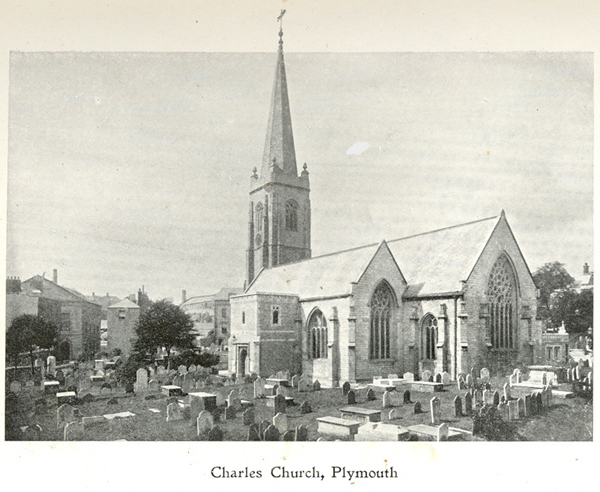
Railway Development in the 1890’s
During 1892 Friary passenger station was built by the London and South Western Railway Company as the terminus of the Lydford to Devonport route. The first Friary Engine Shed was opened at the same time along with the line between Plymouth’s Friary Station and Plymstock. 1892 also saw the conversion of broad gauge tracks to standard gauge so all trains ran on the same gauge. The following year Great Western doubled their main line between Totnes Station and Hemerdon Sidings. The Yealmpton Branch was opened in 1898 and in 1900 Plymouth Station was reconstructed. Prior to that in 1897 the London and South Western Railway Company through the Plymouth and Dartmoor Railway Company opened a branch from Plymstock to Oreston and Turnchapel.
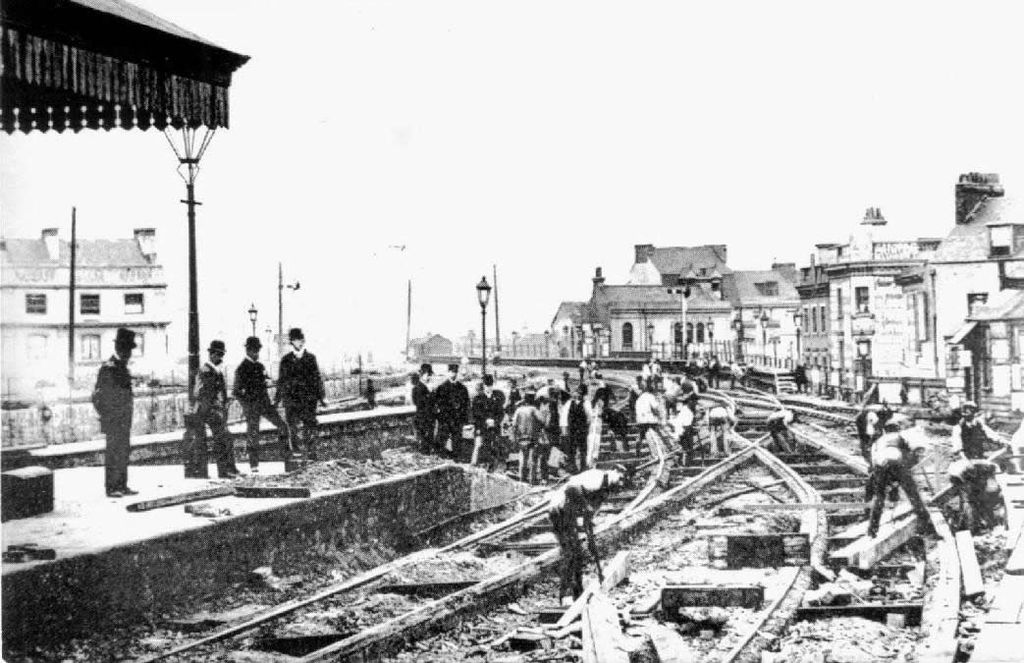

1893
Charles Routledge and Amelia Francis Marry and have their first child
Charles was Patriarch Richard and Mary’s 10th child. He married Amelia Francis at Devonport early in the year. Charles was working as an Iron Caulker whilst Amelia worked as a tailoress and the couple moved into 2 rooms at 13 Jolls Cottages in Devonport alongside Amelia’s parents Frederick and Elizabeth and 2 of her younger siblings, Samuel and Elizabeth, who rented the other 4 rooms. Amelia must have got pregnant fairly quickly as she had their first born, a girl they christened Bertha Amelia on 14 December 1893.
Tragedy for William and Caroline as William John Dies
William John was the couple’s second child and eldest son. He had joined the Royal Navy and was training on HMS Impregnable in Plymouth as a Boy Sailor in 1891. He had been posted to the Cruiser HMS Aurora on completion of his training but caught Enteric (Typhoid) Fever and died 22 June in the Royal Naval Hospital at Stonehouse.
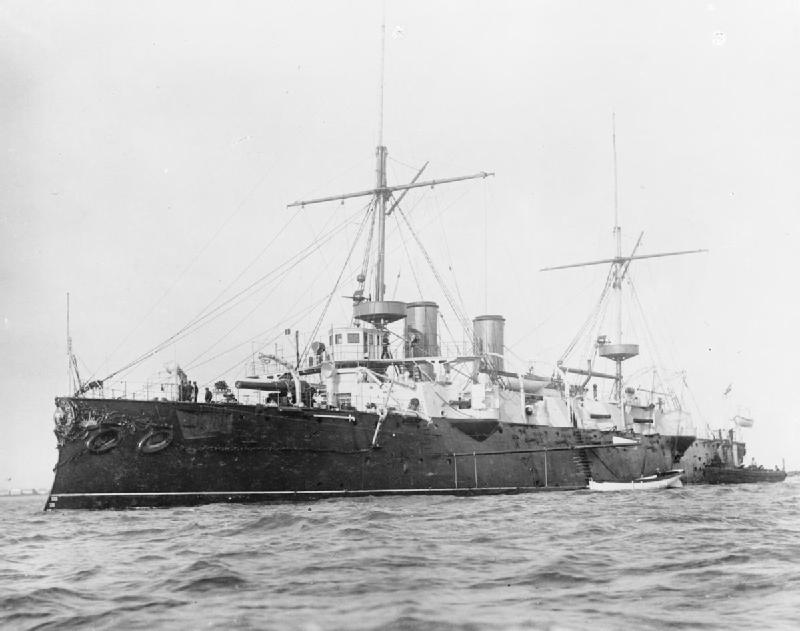
Annie and Thomas Ferris have their Third Baby
The family is back in Warrington after being in India by the time the third child, a son who they christen Thomas, comes along. It’s possible Thomas Snr is now a Schoolmaster with a different Regiment or the family were just on leave from the 1st Hampshires who were stationed in India until 1903.
First Matabele War
The First Matabele War in modern Zimbabwe, instigated by Cecil Rhodes desire to get white pioneers to settle the land, lasted for a few months over 1893 and early 1894. It also saw the first use of the Maxim Gun and the land was renamed Rhodesia in 1895.
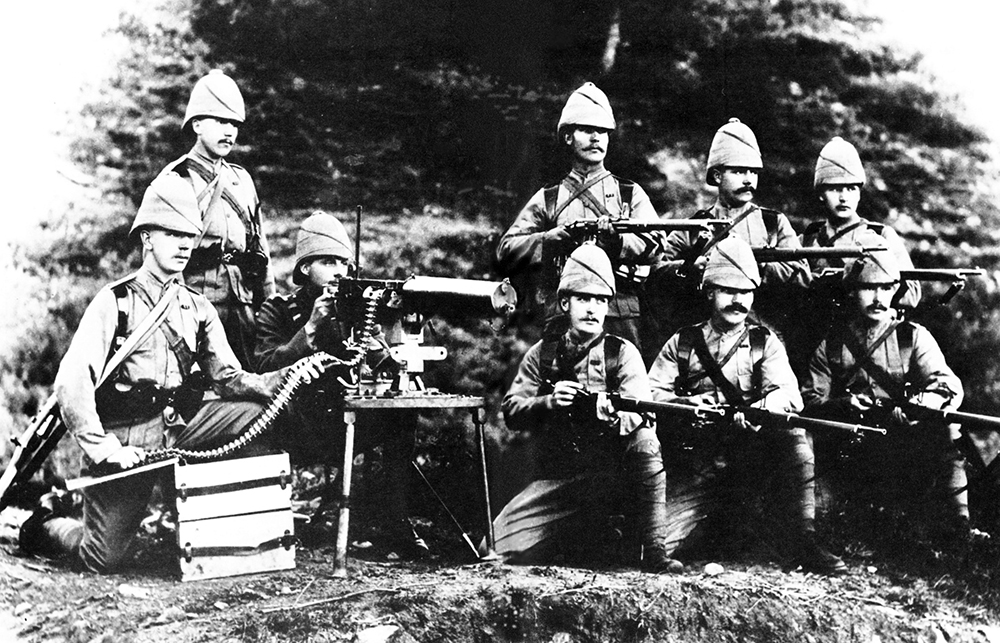
Gunner Shephard, QMSI James both Court Martialled
Both soldiers were serving on the Island. Gunner Shephard was on trial for disobeying an order in such a manner to show wilful defiance to Bombardier Brockington. A Bombardier was the lowest JNCO rank at the time. In mitigation Gunner Shephard stated he was not disobeying the order but had gone to get changed having got wet through and before he did so was ordered to the Guardroom. At the time, and even when I was serving in the 1980’s, it was unusual for anyone on Squadron/Company or Regimental Orders or on trial at Court Martial to be found not guilty for fear of undermining the Chain of Command and Gunner Shephard was indeed found guilty. The Master Gunner QMSI E James was court martialled for being drunk on duty and pleaded guilty.
Tramways in the 1890’s
Tramway services to replace horse drawn buses began in 1893. The Guildhall to Grand Parade route on West Hoe opened using red and yellow painted cars that carried 24 passengers, 12 upstairs and 12 downstairs. Services would run from 9am through to 10pm at 15 minutes intervals. The service was extended in 1896 linking West Hoe and Mutley Plain. Other routes included Market Place to Compton Lane End starting at 7.45am and finishing at 11pm running every 10 minutes. The Theatre Royal to Embankment Road Route opened in 1896. Fares were 1d for any distance and no trams ran on Sundays. In 1897 the Corporation decided to colour code the routes and repaint the tramcars according to the colour allocated to their route. Over time adjustments to routes, timings and fares happened as the management came to realise how the trams were being used and passenger numbers on different routes and were analysed. Car capacity was also extended over the decade so each car could carry 36 passengers.
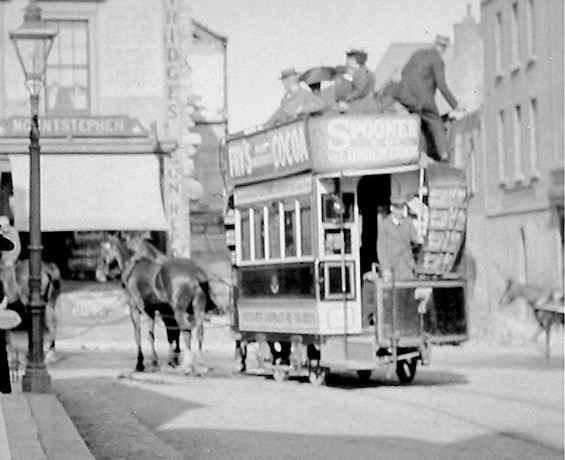
Electrification was the main driver from 1899. A new tram depot was built along with new lines to Beaumont Road, Mount Gould, Pennycomequick, and Peverell Corner were built that year and the original lines gradually electrified. The first morning had a minor incident when one of the drivers took the corner approaching Friary Bridge too fast giving his passengers a good shaking up according to the local press. The electric cars could carry 42 passengers with an average route speed of 8mph including the time for stops. Drivers and Conductors were uniformed. The trams ran until 1945. Devonport didn’t get trams until 1901.

Devonport Albion Move to Home Park
Devonport Albion moved to the home of Argyle Athletic Club, Home Park, but the 1890’s were somewhat nomadic for the Albion and in 1895 they returned to Beacon Park moving again in 1896 to the Rectory Ground in Devonport. The period was one of great success for the Albion they were regularly watched by over 10,000 spectators by the middle of the decade with 17,500 watching them play Oxford University in 1895

Work Starts on Burrator Reservoir
The Plymouth Corporation Act of 1893 authorised the construction of the reservoir at Burrator Gorge. Burrator Dam and Sheepstor Dam were constructed to create Burrator Reservoir and the water was piped to the Roborough service reservoir. During a time without TV or radio major construction projects would often attract large crowds especially at critical points during construction when new or heavy equipment would be used and for some the draw was the possibility to see failure!! The smaller nearby Yelverton Reservoir was added in 1898.
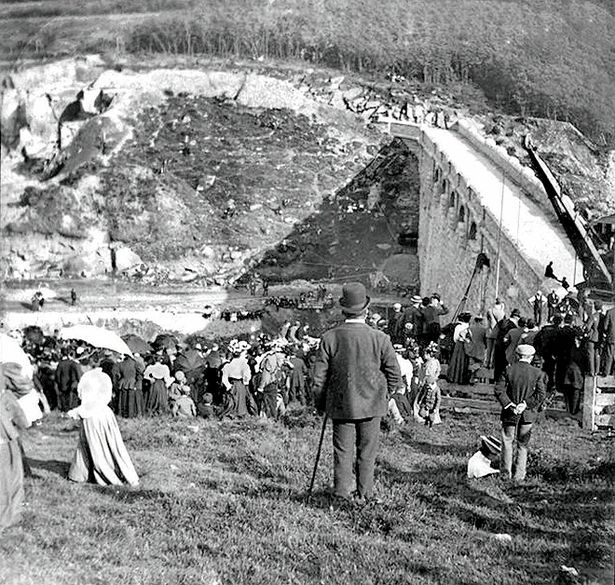
1894
Baby Number 13 arrives for William and Caroline
The next baby for the couple was a boy they christened Edgar.
20 January Harry Somerville Born on the Island
Harry was the fifth child of Master Gunner Ralph Somerville and his wife Charlotte. The family was posted to Aden where his mother Charlotte died not long after giving birth to younger brother Wilfred. By 1901 the family were at Dover Castle where Ralph was a Master Gunner. Harry moves with the family to Teddington after his father is discharged from the Army and finds work as a clerk on the London and South Western Railway after leaving school. He moves to Kingston, meets and marries Geraldine Frost in 1926 and has been promoted to Chief Cashier with the Railway and moved to Caterham by the time of the 1939 Register. Harry passed away in Ringwood, Hampshire during 1967.
Press Drawing of the Fleet next to the Island
This drawing in October appeared in a number of newspapers showing the Fleet at anchor next to the Island.
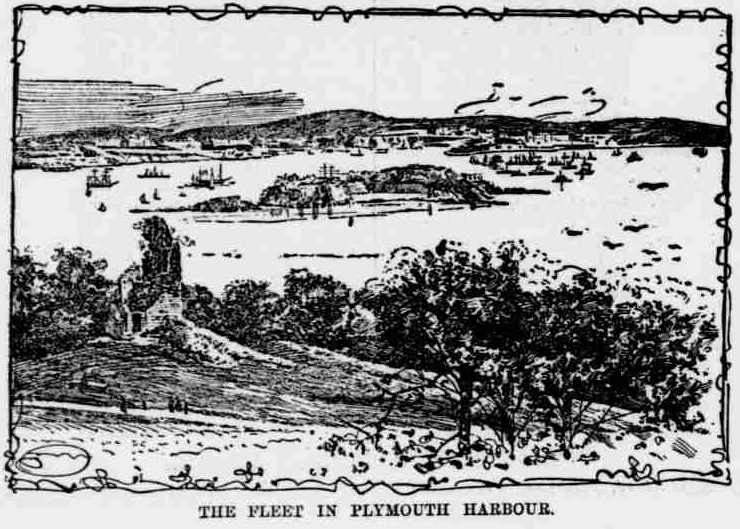
Empire Alhambra Theatre Opened
The Alhambra Theatre in Tavistock Street opened as the Empire Theatre built by Mr Samuel Roberts a local builder and designed by his son. Situated at 12/13 Tavistock Street, Devonport it was approached through an arcade of shops and had seating for around 1,000 people with electric lighting throughout. It opened in March with Mr Sydney J Weeks’ orchestra of 10 players. The Theatre put on a special show in aid of the Drummond Castle disaster fund, but became the New Metropole Theatre in August 1896. When it was leased to Arthur Roscoe Carlton and Edward Leeds. Some of the first shows were performed by Mr F R Benson’s Shakespearean and Old English Comedy Company and included The Taming of the Shrew, The Merchant of Venice, Hamlet, Twelfth Night, She Stoops to Conquer and Richard III. It subsequently changed names several times, becoming the Metropole Theatre in 1896. The start of the silent film era bought another name change as the theatre was granted a cinema licence and reopened in 1912 as the Palladium then the Picturedrome and the Theatre Metropole both in 1914.
1895
Number 14 arrives for William and Caroline and Number 2 for Maud and George
What turned out to be the final baby for William and Caroline was a boy they christened Leonard William. On 15th August baby Winifred, Maud and George’s second daughter was born. She was baptised in the Wesleyan Baptist Chapel in Morice St, Devonport a few months later on October 17.
Plans for Searchlights on Drake’s Island Drawn Up
A maximum of 13 of the 21 planned 9 inch 12 ton Rifle Muzzle Loaded Guns for the Palmerston Casemates were delivered to the Island and possibly as few as 9. Certainly by the time the plans for the searchlight rooms were drawn up there were only 9 left. The Island defences were about protecting the sea approaches to Devonport from an attack by fast torpedo boats or destroyers so the Searchlights had to be placed just above the high water mark and shine across the water surface to illuminate as much of the Sound in their area of responsibility as possible. The Island defences, both the gun arcs of fire and searchlight arcs were also sited so they interlocked with neighbouring gun and searchlight emplacements to ensure the entrances to and the channels within the Sound were all covered with no blind spots. On the Island one of the casemates towards the south east was selected and the plans show for a ramp to be built to provide access from the inside of the Island and as a protected route for the generator cables needed to power the searchlights. Three interconnected searchlight rooms were planned to be built on the Centre Line of the required searchlight arcs. Two other casemates were converted to Engine (or Generator) Rooms to power the searchlights. Other casemates were converted to stores and fitters workshops as both generators, searchlight and the new Breech Loading Guns had interchangeable parts allowing repairs to be done on the Island. Others were converted to accommodation. The searchlights were in place by 1898 at the latest with the 9 inch 12 ton guns eventually tipped onto the foreshore, possibly using the newly constructed ramp prior to the searchlights being put in place. The Guns were recovered for scrap by the Royal Navy during World War II in 1943 which is why none survive on the Island today. The design for the searchlight rooms and access together with adapting the other casemates was done by the Royal Engineers. Usually a tender for the construction would have been put out for local builders to bid for but I can’t find out if it was built by a civilian firm or by the Royal Engineers. In these early years not only did the Royal Engineers play a large part in developing searchlights and how they could be used effectively but they also operated them, Searchlight operations didn’t pass to the Royal Artillery until the start of World War II. During World War I the searchlights were operated by the territorial soldiers from the electric light companies of the local Fortress Regiments of the Royal Engineers.
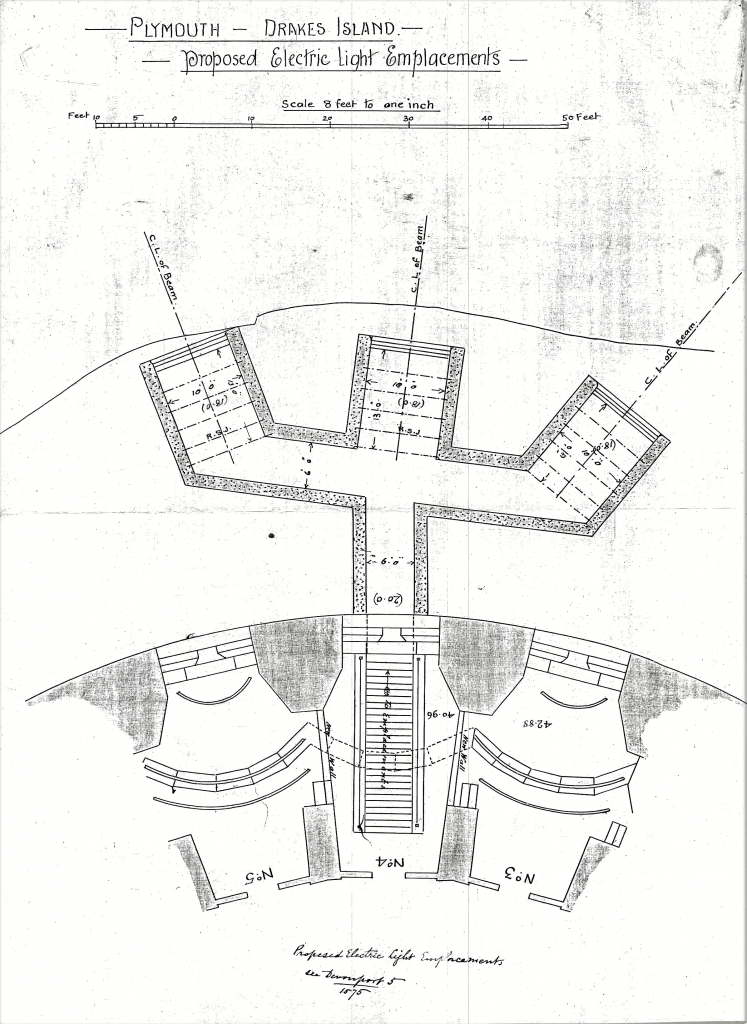

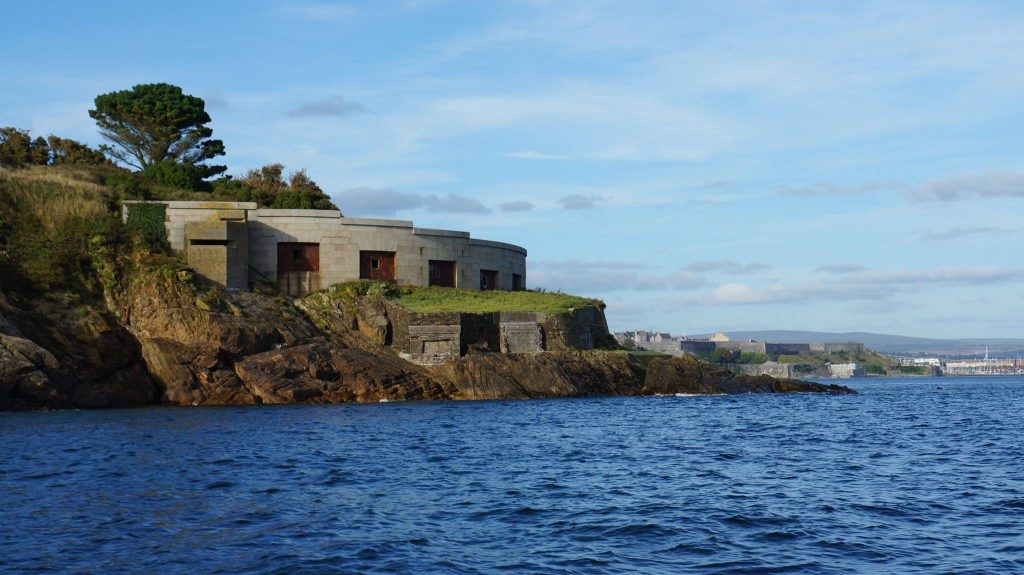
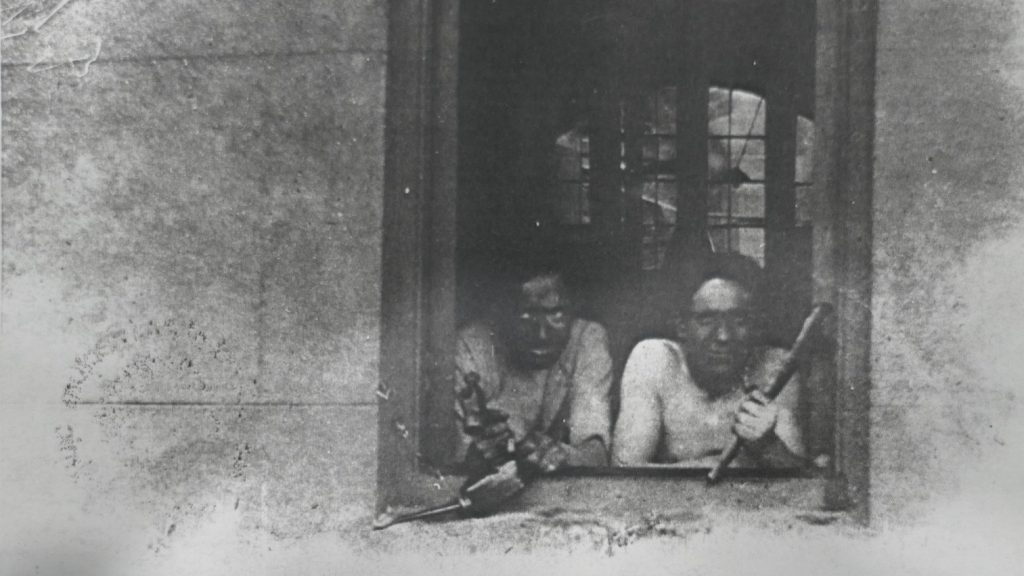
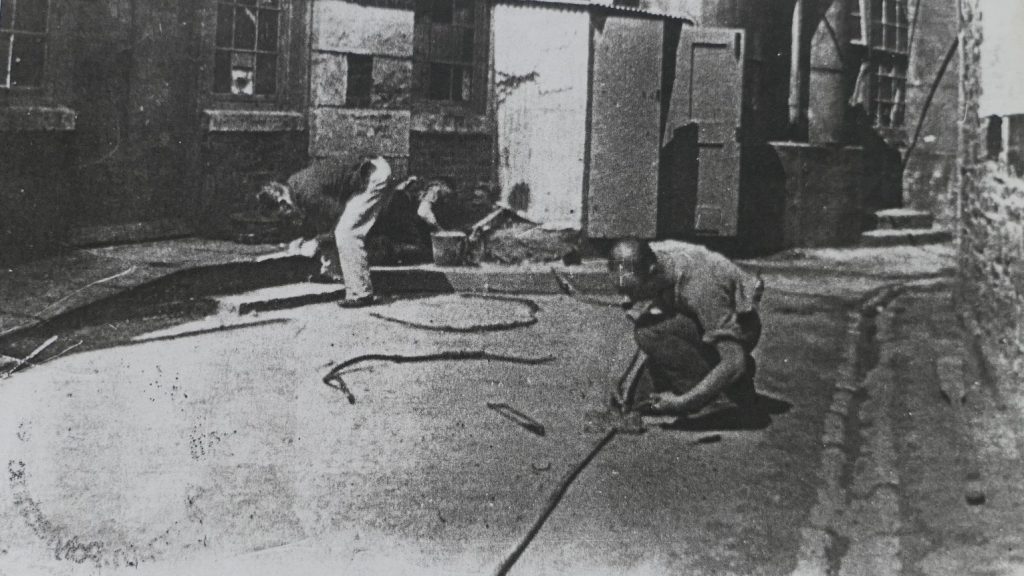
Golden Lion calls Drake’s Island Gunners as Witness’s in Brothel Law Suit
A case was bought by the Police against Emanuel Weeks, the Landlord of the Golden Lion in Bath Street, for allowing the premises to be used for disorderly purposes of gambling and prostitution. Emanuel was a retired Police Officer and called both Gunner Frederick Archer and Gunner Meath (both regulars at the pub apparently) as witnesses. They along with other customers and neighbours said the Pub was run in an orderly manner. In the end there was a dispute as to whether the two PC’s observing the Pub had recorded what they had seen accurately. Emanuel was fined £10 but his licence wasn’t endorsed so our Gunners could continue to enjoy the delights of the Golden Lion uninterrupted.
Gunner Ford Court Martialled
Gunner Herbert Ford was charged with disobeying an order by refusing to leave the canteen when ordered to do so by Acting Bombardier Dolan. It has always been and even now still is the bane of a Duty NCO’s life to clear the soldiers canteen at closing time especially of they have been overindulging. Gunner Ford also threatened A/Bdr Dolan by saying “You are all alone I will punch you on the nose”!! He was found guilty.
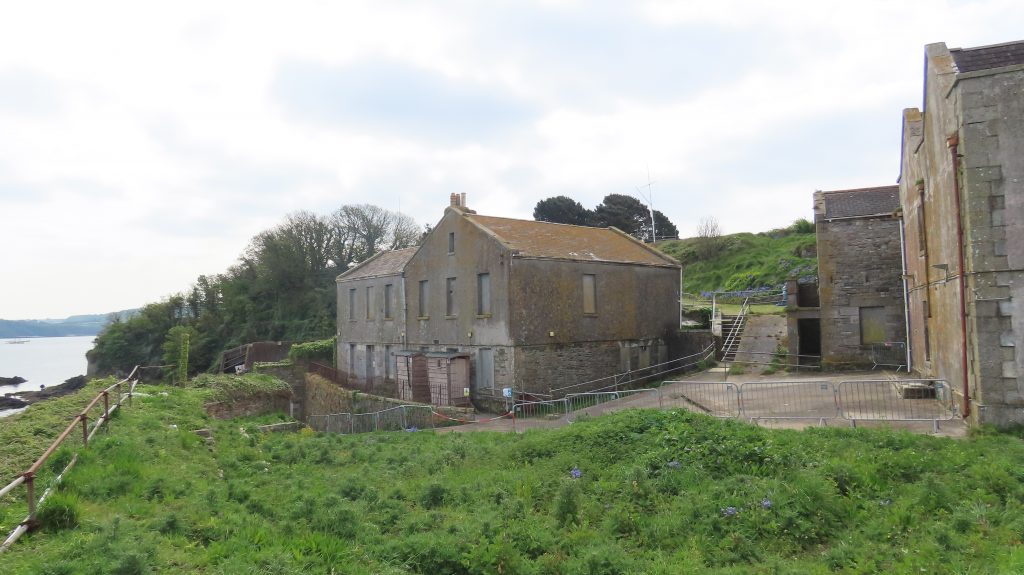
Gunner William Napier Falls to his Death
In July Gunner William Napier was found by a search party at the base of the cliffs facing the Breakwater. He was 29 years old with a good record and had apparently been resting on the ramparts and fell asleep then fell as he rolled over. His hat and overcoat were found nearby and suicide was not suspected. A Bristolian William was buried at St Mary Redcliffe Cemetery in Bristol a couple of days after the inquest.

Western Evening Herald Launched
Plymouth’s first evening newspaper, the Western Evening Herald appeared in April 1895 costing a half-penny. It was renamed The Evening Herald and Western Evening News in 1923 and was renamed again in 1924 to the Western Evening Herald and Western Evening News.
Peoples Park Devonport Opens
In August 1887 the War Department had rented out at £65 10s per year 37 acres next to New Passage Hill to Devonport Corporation for use as a public park. An estimated £900 was required to develop the Park of which the Government provided £300, the Corporation £250, the Lord of the Manor donated £100 and the 26 members of the Council subscribed £60. The balance was raised by subscription. A procession left Devonport Town Hall on Thursday March 8th 1894 led by the Mayor, Alderman W Waycott and by the Borough Band to cut the first ceremonial sod. The architect, Mr S Roberts and contractor Mr A N Coles had completed the works by October 1895 when the Park was officially opened. Officially named Devonport Park it was commonly known as the Peoples Park and the various families in the Routledge clan would almost certainly have made use of it.
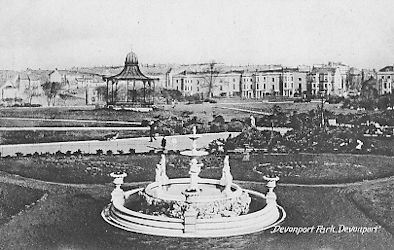
Annual Police Report
Just to give a flavour of the criminality at the time the Chief Constable Joseph Sowerby, who remains the youngest Chief Constable appointed in the UK at 29 years old when he was appointed in 1892, annual report stated 147 Serious, indictable crimes with no cases of murder, attempted murder or manslaughter had been reported with no cases of people hiding the bodies of new born babies. 151 suspects were arrested for the 147 cases with 33 sent to trial and 118 dealt with summarily. There was an increase in house breaking and embezzlement including 7 offences involving betting houses. 1,145 persons including 317 females were apprehended or issued summons for non indictable cases. 831 were committed, 275 discharged, 12 withdrawn and 13 handed over to the Military. 15 known thieves, 2 receivers of stolen property and 4 convicts or licence were residing in Plymouth. There were around 350 licenced premises including Public Houses and Beer Houses. 343 drunks were charged, of which 281 were convicted with 264 imprisoned and the remainder, usually first time offenders, fined. The Fire Brigade attended 83 alarms including 37 at night. 153 pedlars licences at 5 shillings each were issued and a small body of Water Police formed to combat increasing criminality on the ships and boats in the Sound. The Chief Constable at this point was also the Chief Fire Officer and both services shared the same HQ. Chief Constable Sowerby was also a reformer who cared for his men. Not only did he stop the 1s per week (for 40 weeks) deduction on new constables wages to pay for their uniforms he also handed back the money paid by existing officers. He also ensured the force was properly equipped with lamps for the night shifts and had sufficient handcuffs to detain suspects.
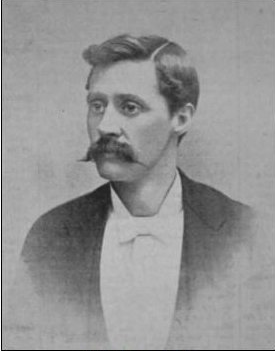
1896
Maud and George Mounstephen have their second baby
Maud gives birth to their second daughter who they christen Winifred.
Gunner Travers Drowns
In May another in a fairly long line of accidental deaths stretching back a number of decades happened when some of the Gunners were using one of the Island boats when it capsized. One report says as a result of the men messing about but at the inquest the survivors said they were transferring from the boat to the Island dingy (a row boat) ten yards offshore to make the transfer to the Island. As all the passengers boarded the dingy at the same time it capsized. All were rescued the boat except 21 year old Gunner Harry Travers who drowned. At the time few people could swim and clothes were much heavier so made any rescue more difficult. Harry was buried in Stoke Damerel Cemetery a couple days after his death.
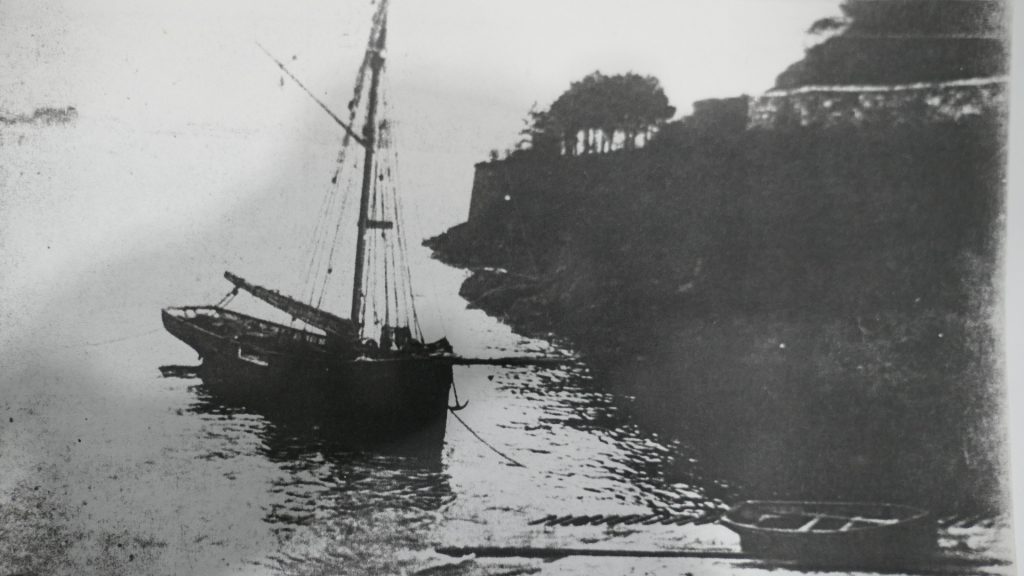
Anglo-Zanzibar War and Second Matabele War
The Anglo-Zanzibar war, the shortest war in history, was fought lasting no more than 45 minutes and settled by the Navy firing on the Sultan’s Palace showing the complete mismatch in firepower. Later in 1896 there was revolt in Matabele resulting in the Second Matabele War which was put down in a few months with the use of superior weaponry by the British and settlers.
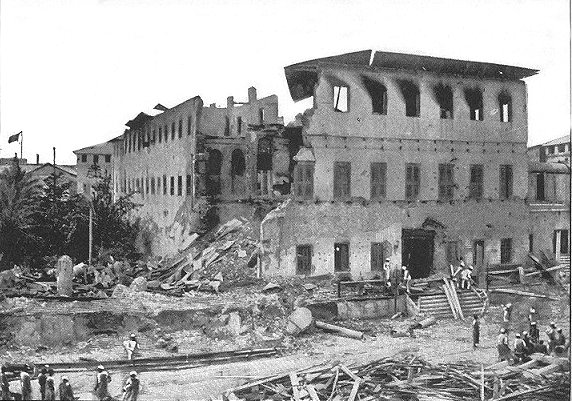
Devonport High School for Boys Opens
Mr Alonzo J Rider was the Headmaster of Stoke Public Higher School, Keppel Place. In 1878 he and his wife were apparently reprimanded by the secretary to the committee of the School, a Major-General L Tripe, which is thought to be the driver behind Mr Rider’s desire to found his own school. That was realised when the Devonport, Stoke and Stonehouse High School for Girls went into voluntary liquidation and vacated their building at the top of Albert Road, Stoke. The new Naval, Civil Service and Commercial School opened there in January. The school was ventilated, heated and completely furnished with its own chemical laboratory equipped. It was renamed Devonport High School for Boys shortly afterwards. Mr Rider also acquired a 11½ acre site at Keyham Barton for use as a playing field. Cricket and Football were played on Wednesday and Saturday afternoons. A school day back then started at 9am and finished at 4.45pm with one break, from 12.30 to 2pm for lunch. Lessons lasted for 45 minutes. There was no school on a Sunday although the staff had to supervise the boarders. The school cap was dark blue.
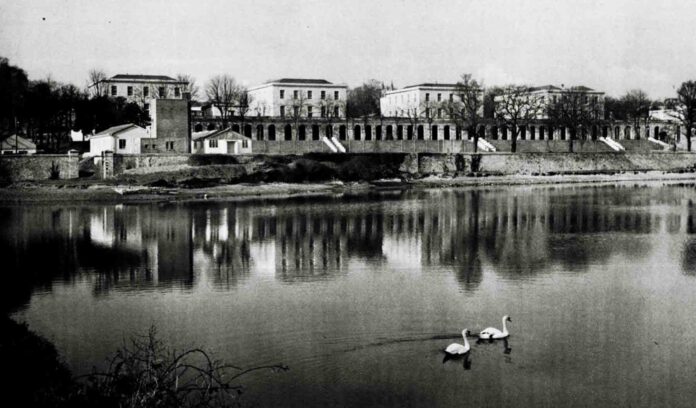
1897
Lilian Violet Routledge Dies
Lilian the 12th and last of Patriarch Richard and Mary’s children passed away aged 19 whilst living at 21 Martin Terrace.
Charles and Amelia Routledge have their second child
It was a second girl who they christened Lilian Violet after Charles’ sister who had passed away earlier in the year. Lilian was baptised with her older sister Bertha, now aged 4 on the same day, 28 October 1897 in the Wesleyan Methodist Chapel in Morice Street, Devonport.
Rosina Routledge marries Richard Thomas Blackler
Rosina was the 9th of Patriarch Richard’s children born in 1868. She married Richard, a local lad from Ermington and at 25 years old he was 4 years her younger. Richard is a skilled labourer at HM Dockyard, Devonport and they initially move into 47 St Georges Terrace, Devonport renting 2 rooms.
11 October Alice Maud “Geraldine” Lamb Born
Probably the most well known birth on the Island, Alice born to Gunner Samuel Lamb and his wife Alice became better known as Geraldine and set up the famous Geraldine Lamb School of Dance that is still going strong in Plymouth today. I have covered Geraldine’s story in an earlier blog so won’t go over it again here but the link is below
Plymouth Corporation Electricity Works
The Devon and Cornwall Electricity Supply Company was formed in 1889 and Plymouth partly due to local business pressure and partly to electrify their tramway network was granted the Plymouth Electric Lighting Order in 1894 which authorised the scheme to supply the Borough with electric power. Initially a power station was proposed at Prince Rock with street lighting in the main shopping area and on the Hoe. The difficulty of working with different authorities was shown up when Devonport Council chose a direct scheme incompatible with Plymouth’s network. Work started on the Plymouth Corporation Electricity Works at Prince Rock in 1897. W G Heath & Company, a local business installed electric street lighting in the streets and the wiring in Ebrington Street and Old Town Street for the new tram service. The Plymouth Corporation Electricity Works opened in September 1899 along with the new electric tram service from Prince Rock into the Town Centre.
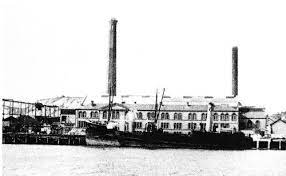
1898
Last Recorded Island Birth Lillee May Irving
Lillee was the fourth of four children born to Cpl Frederick and Harriet Irving. Corporal was still a rank in the Artillery above Bombardier which was in essence the equivalent of today’s Lance Bombardier at the time. The Corporal rank wasn’t replaced by Bombardier in today’s rank structure until after World War One. Frederick was discharged shortly after Lillee was born and the family moved to Fulham. The family was living at Lavender Hill with Frederick working as a messenger in the War Office until at least 1921. Lillee met and married Ernest Rollason in 1924.
Thirza Routledge marries Sergeant Charles Edmund Hodgkinson, Worcestershire Regt.
William and Caroline’s eldest Thirza married at Devonport aged 26. She must have met Charles not long after the 1st Worcesters arrived in Plymouth during 1897 following a twenty year stint in India, Aden and Burma. Charles was 3 years younger than when they married. He went on to have a long and distinguished career with the Worcesters earning the Distinguished Conduct Medal in the Boer War and Military Cross in World War I. He was later commissioned into the Yorks and Lancs.
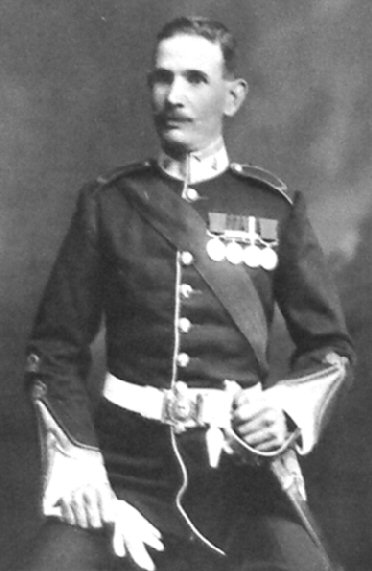
The Curious Case of a Gunner Selling His Wife
Sarah McCormick was charged with Bigamy at Newton Abbot. It transpired in 1891 she had married Gunner Patrick McCormick who was stationed on the Island at the time. He was then deployed to South Africa in 1892 and didn’t return until 1898. In the meantime Sarah had married James Weeks in 1897 not having heard from Gunner McCormick for a number of years and assuming he had died. Patrick on his return had found Sarah living with James and apparently threatened them both and demanded £30 for his wife and he would then leave them alone. That was the sum that Patrick said he had sent to Sarah from South Africa. Mr Weeks said he didn’t have £30 so they agreed it would be paid at 2 shillings a week and a bank account was opened at the Post Office so the money could be paid and allow James to effectively buy Sarah from Patrick on the never never. The Bank book was part of the evidence. Patrick said he had sent numerous letters and money home whereas Sarah said she only heard from him occasionally and had heard nothing for the last couple of years. It should be noted despite the threats and the fact Patrick was effectively selling his wife it was Sarah in court for Bigamy. The case was sent to trial at Crown Court but I haven’t been able to find out the jury’s verdict.
Western Battery of QF 12 Pounders Built
The Western Battery was one of 3 gun emplacements to take 12 Pounder Quick Fire (QF) guns and was sited behind the Ablution Block facing toward the Rame Peninsular and Breakwater. They had a 4 man gun crew augmented by more ammunition carriers as available and fired 15 rounds a minute. They replaced the old RML Guns which took an 8 man gun crew 5 minutes to reload. The guns had a range of about 10 kilometres and their rate of fire enabled them to take on faster torpedo boats, small destroyers and submarines that had been developed over the past couple of decades.
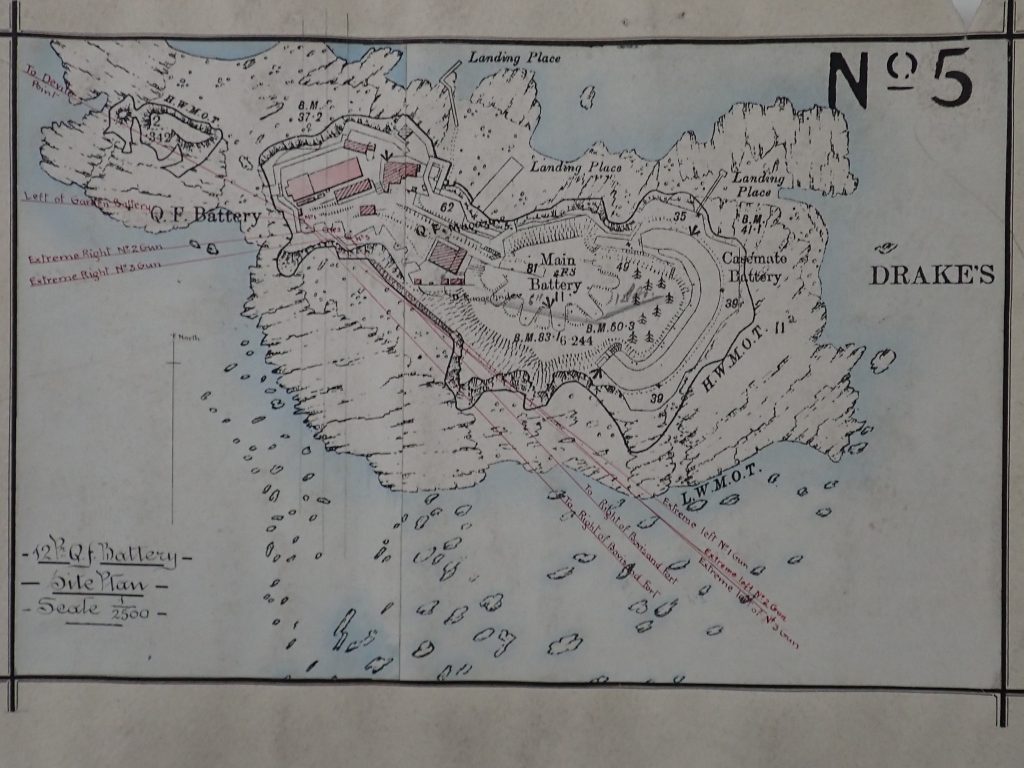
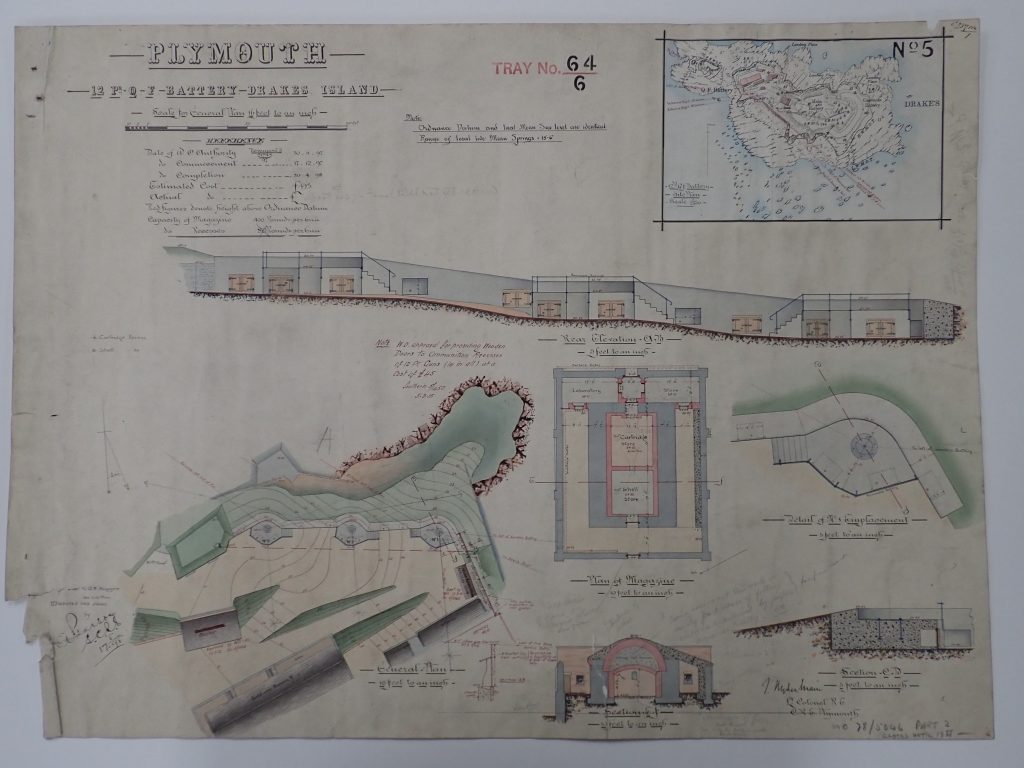
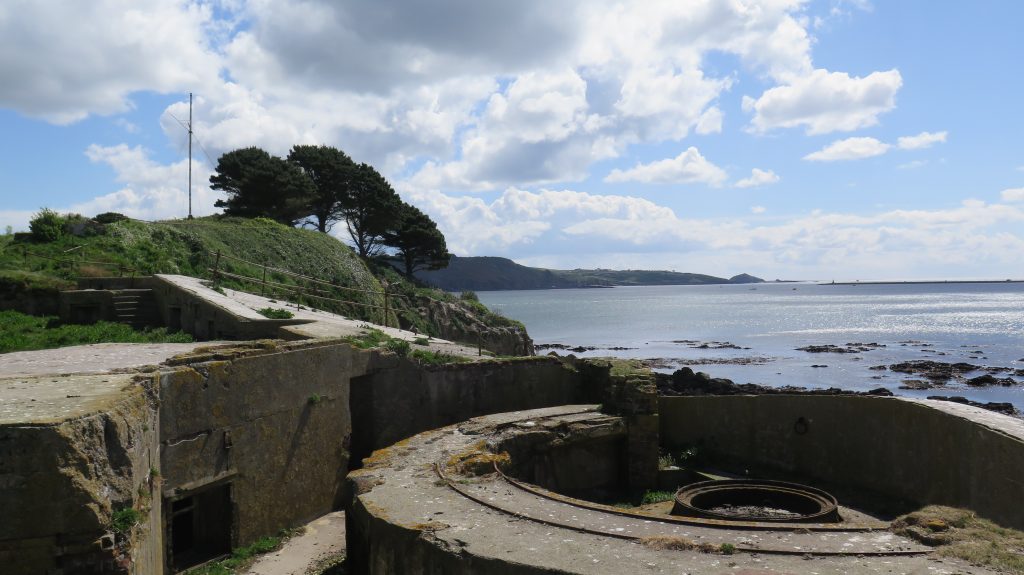
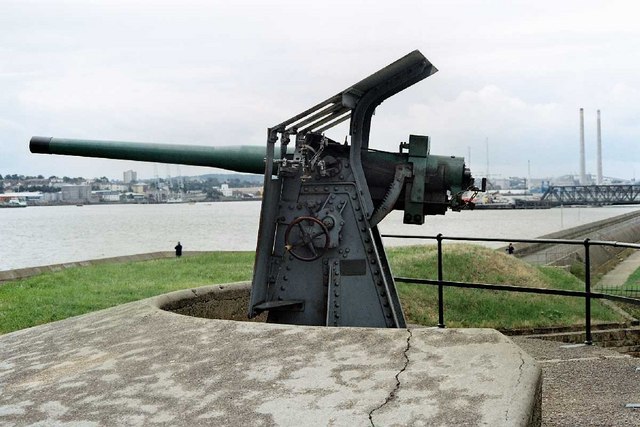
Beacon Reservoir Built
As Pennycross became part of Devonport in 1898 Beacon Reservoir was built to supply fresh water to the Keyham and Keyham Barton districts and the Royal Naval Barracks. Work had also started on 400 to 500 new houses so the need for fresh water was urgent. The reservoir had an electric water level indicator which continuously recorded the depth of water on a diagram.
Devonport Expands
Royal Assent was given to the orders and acts expanding Devonport. Part of Saint Budeaux and Weston Peverell or Pennycross were added in November. Devonport Borough Council increased from 36 to 45 Councillors and from 12 to 15 electoral Wards. However Devonport’s entitlement to receive rates from Saint Budeaux was made conditional on first reconstructing Camel’s Head Bridge, extending the tramway as far as Saint Budeaux Railway Station and constructing a landing stage at Saltash Passage for larger passenger steamers. Devonport was also required to establish a new cemetery, open a reading room, provide fire appliances, establish a Police presence, provide mains for the supply of gas, improve the footpaths and construct new ones long the main roads, and provide a footbridge to connect with Weston Mill Viaduct. They were also to take over the sewerage and drainage in Saint Budeaux from Plympton Rural District Council. Saint Budeaux, King’s Tamerton and the military establishments at Bull Point and the Camel’s Head district of Pennycross moved within the Borough of Devonport, while Honicknowle remained in the Parish of Saint Budeaux. The Western Morning News welcomed the news reporting that “It has been kept in bonds and swaddling clothes longer than was good for it. The operation of the manorial system has had a depressing influence upon the town”.
New Palace Theatre Opened
The New Palace Theatre was opened in September. In the early hours of 23rd December 23rd a fire broke out and destroyed the stage and the front of the auditorium. It reopened in May the following year and entertainment including vaudeville and the occasional film were staged at the Palace.
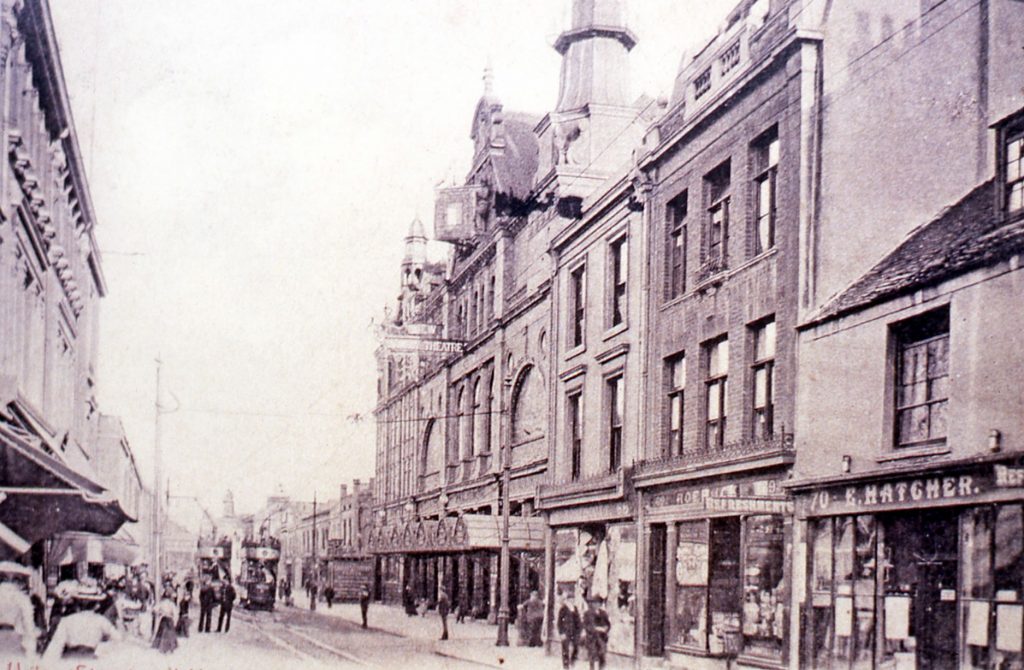
1899
Thirza and Charles Hodgkinson have their first Child
Thirza, still at Devonport, gave birth to a baby girl she and Charles christened Thirza Kate. Not long after Charles by now a Sergeant deployed with 1st Worcesters to South Africa and the Boer War. Thirza and Thirza Kate moved up to Walsall to live with Charles’ sister Elizabeth and her husband Joseph Freeman, a painters labourer. Blanche, Thirza’s younger sister and Percy Charles her 8 year old brother also went with Thirza. Blanche found work as a Warehouse Woman to help with the household budget.
Caroline Routledge Passes Away
Not long after Thirza Kate was born Caroline, after giving birth to 14 children, 9 boys and 5 girls, between 1855 and 1895 passed away aged 45. The family were living at 23, St Levan Road in Devonport at the time. It seems not long after the decision was taken by William to enrol two of their daughters, Ida Emily aged 11 and Emily aged 9 in the Devonport Workhouse also known as the Ford House Public Assistance Institution. This is quite probably as the family was too large and too young with 7 school age children for William as a working man to look after.
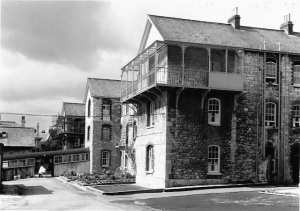
Rosina and Richard Blackler have their first child
Lilian Violet who along with Charles and Amelia’s baby was probably named after Rosina and Charles’ recently deceased sister. Lilian was baptised in the Wesleyan Methodist Chapel in Morice Street which was used by a number of the Routledge siblings for baptismals and marriages.
Lee Moor Tramway Upgraded
The Lee Moor Tramway was a privately owned mineral railway built to carry china clay from Dartmoor to the quays at Plymouth. The tramway was operated by horses but in 1899 two steam locomotives were ordered as clay production had increased and the tramway required extra capacity. The line between the Cann Wood and Torycombe was relaid with sleepered track, the level-crossing gates at Whitegates were installed and an engine shed constructed at Torycombe works. Lee Moor No. 1 and No. 2 both 4 feet 6 inch gauge locomotives built by Peckett of Bristol were delivered to Marsh Mills Station. They had brass nameplates with green with yellow and green lining livery on dull red frames and wheels. As production on the Moors reduced the line closed gradually until it finally closed for good in 1947.
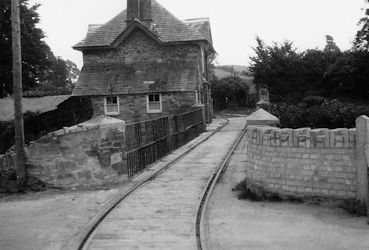

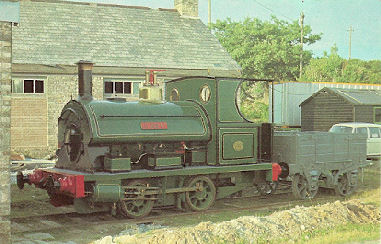
Lee Moor Tramway at Marsh Mills with Lee Moor 1 and 2 Engines
Football Herald Launched
A Saturday only Football Herald appeared during the season. It wasn’t produced during either World Wars but reappeared in 1946 costing 1½d. It ceased production in 1954 and was incorporated into the main edition of the Herald.

Royal Regiment of Artillery Reorganises Again
Less than 10 years after the last reorganisation the Artillery formed itself into 3 branches, the Royal Horse Artillery, the Royal Field Artillery and the Royal Garrison Artillery (RGA). The RGA had responsibility for the guns in the forts and fortresses, including Coastal Forts at home and abroad in Empire whereas the RHA and RFA would be the Artillery in the Field. Most of the reserve territorial or militia Artillery forces fell into this bracket and it was the RGA who manned the Island defences during World War I.
Boxer Rebellion and Second Boer War
Towards the end of the decade the Boxer Rebellion in China and Second Boer War both started in 1899. The Boxer Rebellion against European and Japanese trade practices was put down by 1901 with Russia, Japan, Great Britain, France, the Austro-Hungarian Empire, Germany, Italy and the USA all sending forces to protect their interests. The Second Boer War lasted until 1902 during which RSM Charles Hodgkinson won his DCM. The Boer’s fought using guerrilla tactics and in response the British adopted a scorched earth policy to deny the Boers food and water. Over 100,000 Boer civilians and families were relocated into concentration camps to ensure from the official British perspective they were protected but in reality without the farms food and no plan or desire by the British to look after the civilians over 26,000 died from starvation and disease. Black Africans were also interned to prevent them supplying or being forced to supply the guerrillas, over 20,000 black Africans died as well. As the British adjusted their tactics Kimberley and Bloemfontein were relieved and eventually the Boers were ground into submission and sued for peace in 1902. By 1910 the Union of South Africa was formed and was part of the British Empire with Dominion status. Other Empire troops from Canada, Australia and Rhodesia fought on the British side during the war. Notable among them were John McCrae, a Canadian Gunner Officer who served in the Medical Corps in WWI and penned the famous In Flanders Fields poem, Mahatma Ghandi worked as a medic and raised an Indian Medical Corps of over 1100 ambulance drivers, Sir Arthur Conan Doyle who wrote the Sherlock Holmes stories was a volunteer doctor. Winston Churchill also served in the conflict.
1900
Frederick Richard Routledge marries Ellen Elvins
Frederick who was working as a painter must have met Ellen who was from Mevagissey in Cornwall at some point in the 1890’s. They got married on 7 July in Mevagissey and moved into 76 Wilton Street in Devonport renting 2 of the 6 rooms. William Rider and his wife also rented a room whilst Martin Darnell and his wife rented the other 3. They are on the same street as Frederick’s sister Maud and her husband George Mounstephen.
Albert Thomas Routledge marries Ada Mary Ann Merrit
Albert is still working in Kildare, Ireland and Ada, I don’t have her surname is from Surrey. Kildare was a large British Military base so it’s possible Ada was the daughter of a soldier or someone else attached to the military.
Rupert Smith (Contractor) Injured on Drake’s Island
During the construction of the Breech Loading Batteries that run the length of the Island one of the contractors, 20 year old Rupert Smith fell from scaffolding and suffered a concussion causing him to be evacuated to hospital on the mainland.
Claud Routledge Enlists in the Army Service Corp
At 18 Claud enlisted on 14 September following brother Alfred by now a Sergeant into the Army Service Corp. His medical description was given as 5ft 3 inches tall (he would grow another 3 inches to 5ft 6 over the next couple of years), fair complexion, blue eyes and brown hair. His religion was given as Wesleyan Methodist.
Daisy admitted to the Ford House Institution
Daisy is on the admissions list for 1900 along with older sisters Ida and Emily. It seems Daisy was either attending the school from home or was an inmate only briefly as she is listed on the 1901 census as being at home with her father William whereas Ida and Emily are on the census as inmates.
Island Searchlights used during Major Exercise
By now searchlights had been installed at most of the major fortifications protecting Devonport. Searchlights at this time were manned and maintained by the Royal Engineers not the Royal Artillery. This exercise in September appears to have been the first time they were used during a large exercise. It was spread over a week with the Royal Navy acting as enemy and trying to infiltrate the Sound and attack Devonport. All the fortifications were involved and used blank rounds and flares. Military umpires were stationed at each gun deciding if they had hit the enemy ships. These usually coincided with the Reserve or Territorial Artillery annual Camps as it was these units that would man the coastal defences during war not the regular units who garrisoned them during peacetime. However the main aim of the exercise was to evaluate the new electric fittings and generators installed at the forts.
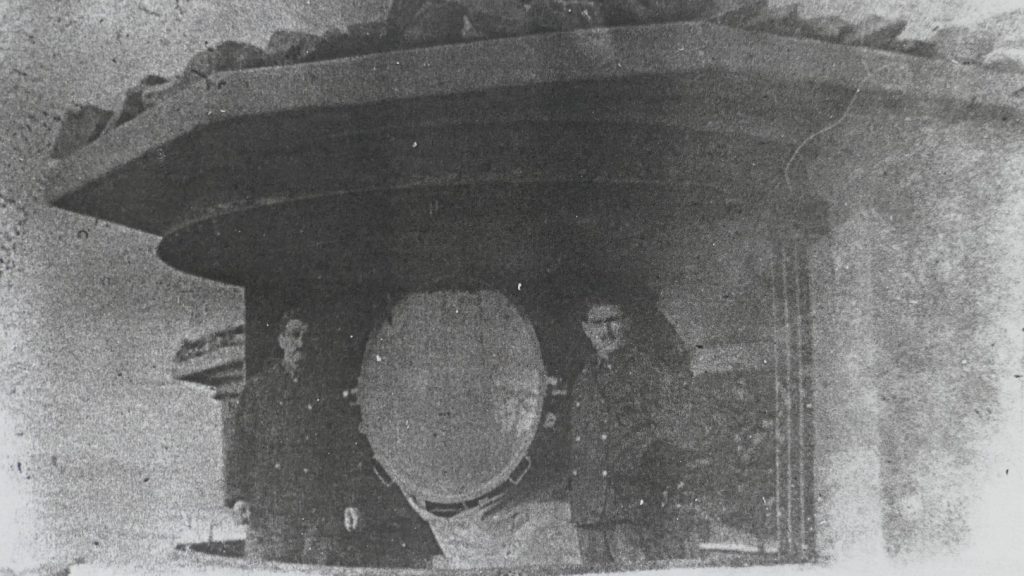
1901
Alfred Ernest Routledge marries Isabel Simpson
Alfred Ernest, William and Caroline’s third child married a London lass, Isabel Simpson from Bermondsey at Woolwich, London in early 1901 just prior to the census. Alfred must have left home around 1894 to enlist he is now a Sergeant in the Army Service Corps. Marrying at Woolwich suggests Alfred was posted there. At the time there was a large military presence with not only the Artillery Depot but the Army Ordnance Depot and factories, the Woolwich Arsenal, based in the area. The Army Service Corps transport companies would have been involved in moving the Ordnance. The Woolwich Arsenal Football team later moved to North London and it’s this link that provided the nickname of the club, the Gunners.
The Routledges During the 1901 Census
As a round up of the Routledges over the previous decade there had been the usual mix of births, deaths and marriages that affected any family of the time. Grandchildren and first great grandchild of Richard and Mary Ann were born and the family started to spread well beyond the confines of Plymouth out to Ireland and the Empire. At this time the extended family provided the social security net in the absence of any welfare state although when William was widowed the family had to rely on the Poor House as well. The family tended to live close to each other and there were often a couple of the Routledge families living in the same street or renting in the same house as their parents, siblings or in-laws. The girls when they married tended to live close to the husbands families rather than their own parents. The exception was the boys that went into the military or girls that married military men, especially soldiers, whose movements would be dictated by military postings
Mary Ann, the widowed Matriarch of the family is living at 111 Wilton St in Devonport with her daughter Maud and her husband George Mountstephen, a Railway Accountant plus their two children Hilda aged 10 and 5 year old Winifred. Just down the road at number 76 are newly weds Frederick and Ellen who are renting 2 of the 6 rooms.

William the eldest son and now a widower at the age of 48 is living at 13 Hawthorn Grove, Devonport. It is a 4 roomed house and they are not sharing with another family. Living with him are 15 year old Albert who like William is earning a living as a general labourer, Jack aged 10, Daisy (8) and Leonard (6). It likely wasn’t long before they moved out to a cheaper house.
Thirza, William’s eldest, and her first child Thirza Kate are living with in Walsall with Thirza’s sister-in-law whilst her husband Charles Edmund Hodgkinson is in South Africa with the Worcesters fighting in the Boer War. Thirza’s sister Blanche and brother Percy Charles are also living with her in Walsall. Ida and Emily are still living as Scholars at Ford House Institution.
Sergeant Alfred Ernest of the Army Service Corp and wife Isabel have been posted from Woolwich back to Devonport and are now renting a single room at 29 George Street, Devonport. The other 6 rooms are rented out to 5 different families, mostly without children.
21 year old Sydney Robert and his 8 year old brother Edgar William are living at Prospect Farm in Penny cross, Devonport with their Grandmother on their Mother’s side 68 year old Mary Holland who works as a Market Gardener. Also living at the farm is Mary’s niece Maud Rendall. The move out of the family home, especially for Edgar, Ida and Emily may have been the difficulty for their recently widowed father William to support them given the large size of the family.
18 year old Claud has been in the Army less than a year having enlisted in the Army Service Corp perhaps at the suggestion of his brother Alfred who was already serving and also perhaps he was prodded by William as a way of reducing the numbers in the household.
Mary, now a widow for 15 years since John died is living at 13 George St with her youngest 19 year old Edith. They are still sharing 4 rooms with Mary’s widowed sister Agnes Beaglehole and her 25 year old son Harry. Edith is working as a Dressmaker, Mary as an Upholstress and Harry is a shipwright. The other 3 rooms are rented out to PO Harry Riddick, his wife and 10 year old son. Beatrice, Mary’s eldest isn’t at the family home and may be up in London. She is going out with Reginald Thomas Garrard an accountant from Marylebone. Up the road are Ernest and Isabel.
Charles Maynard the deceased Mary Jane’s husband is now living at 16 Alvington St, Plymouth and still working as a shipwright. He remarried in 1892 some 5 years after Mary Jane passed away and is living with his new wife Elizabeth, his two children by Mary Jane, 21 year old Ethel a tailoress and 17 year old Violetta a dressmaker. Also in the family home are Kate aged 7 and George aged 5 his two children with Elizabeth.
Annie and Thomas Ferris with their three children are presumably abroad. The 1st Hampshires who Thomas was attached to as a school master were in India until 1904.
Rosina and Richard Blackler with newly born Lilian Violet are at 47 St Georges Street.
Charles and Amelia with their two children Bertha and Lilian are living in 2 rooms at 13 Jolls Cottages sharing with Amelia’s parents and two of her younger siblings who occupy the other 4 rooms.
Albert Thomas is still working as a builder’s clerk in Ireland with wife Ada.
The 1901 Census on Drake’s Island
There was only a 6 man detachment from the Royal Garrison Artillery on the Island during the census. Commanded by 26 year old Cpl John H Smith who had Bdr Sydney Harry as his 2ic, the remaining four being Gunners, Amos Merchant is also on the Island listed as an Institute Assistant and the only family was the Canteen Manager Henry E Cook and his wife Christina. Everyone was English apart from Christina who Irish.
Corporal John H Smith
I can find little about John apart from he was born at Warley in Essex in 1865 and was based in Plymouth in 1891 as a Gunner in the Old Granby Barracks as part of the St Helena Detachment so would have been about to deploy or would have just returned from that small Island in the South Atlantic. He was 36 and still unmarried at the time of the 1901 census.
Bombardier Sydney Harry
Second in Command Sydney from Redruth in Cornwall enlisted aged 24 on 29th November 1898. His trade was a watchmaker and had been an apprentice at Berrington and Schwerer for 7 years before enlisting. He served until 1910 before being discharged as a Corporal. He spent 4 years in Bermuda with the remainder of his service in the UK and hadn’t married by the time he was discharged.
Gunner Percival William Cummings
Percival, born in Ramsgate, Kent in 1881 enlisted in 1896 aged 15 years. He had been employed as a Page Boy, a domestic servant in training to become a footman before joining up. Percival married Amelia Minnie Crags in Plymouth during 1901 without leave, meaning the family wasn’t on military strength and not living in military quarters or receiving any ebnefits from the military system. They had their first child Harry Percival Victor in 1902. Percival was an Acting Bombardier when he deserted later in 1902 after he was convicted of larceny by the civil courts. He gave himself up to the military authorities in 1903, served his sentence in military custody and then carried on soldiering. The couple had a second child Kitty Lillian Blanche in 1906 before Percival was discharged in 1908. The family moved to 1 Varley Cottages, Liskeard where Percival found employment as a Postman and they had a third child, Herbert George in 1909. By the 1911 census a lodger was taken in to help with the bills, 28 year old John May a local baker’s driver and just after the census a fourth child, Frederick George Gordon was born. The family moved back to Exeter St in Plymouth. Percival was reservist on discharge, soldiers served the balance of a 22 year career with the reserves and in May 1915 was called up. He served with 45 Coy RGA backon Drake’s Island until his discharge as a Corporal and no longer fit for War Service in 1916. On discharge he was given a War Badge to wear. It proved he had served as it was common for men of military age to be abused as cowards in the street especially by women who assumed they were avoiding fighting. After he was discharged the family moved back to Kent where Percival died in 1920 leaving Minnie a widow though she was granted a small pension by the military on Percival’s death.
Gunner Charles Henry Jones
Charles was 39 having been born in St Pancras London in 1862. He enlisted in February 1886 having worked previously as a barman. He was imprisoned for 21 days on a charge of drunkenness in 1890, served in Halifax, Canada and Bermuda before being discharged in 1905. It’s not clear what happens to Charles after his discharge, he intended to live in Liskeard but his next of kin is given as his brother who is living in New York USA, so he may have emigrated there.
Gunner Arthur Payne
Arthur was a 24 year old Surveyor and Militia reservist from Melbourne, Leicestershire when he enlisted in 1896. He was imprisoned for 14 days by his CO on Regimental Orders in 1904 and was discharged in 1908 never having been promoted. He had served abroad in Sierra Leone putting down the Hut Tax rebellion, St Lucia and South Africa after the Second Boer War had finished. I have no further information on Arthur.
Gunner Joseph Coulson
I can’t find anything on Joseph apart from that on the 1901 census where he is shown as single and born in Ely, Cambridgeshire in 1881.
Henry E and Christina Cook – Canteen Manager
Henry was a 54 year old Naval Pensioner from Weymouth in Dorset. Christina was born in Cork, Ireland in 1847 and was 6 years younger than Henry. They had 6 children, all born in Cork, although one was an infant mortality the others were Georgina (b 1867), Charles (b 1870), Alice (b 1876), Edith (b 1878) and Frances (b 1879). The family were living atand running the Old Inn, Plympton during the 1881 census but had moved to 5 Shipwrights Yard in Totnes by 1891 where Henry was working as an Insurance Agent for Pearl Assurance, their three youngest were still living with them. All the children had left home by the time Henry and Christina started running the canteen and by 1911 they were living at 6 College Road, Keyham in Devonport where Henry was now earning a living as a Fire Insurance Company.
Amos Smith Marchant – Institute Assistant for the Soldiers Recreation Room
The Institute appears to have been a Government department as it is listed as such in Amos’s 1911 census return. Amos was born in Pevensey, Sussex in 1868. He was at work with his father at 13 years old, both were general labourers. Amos enlisted in the Royal Artillery at 18 in 1886, bought himself out after 18 months then joined again less than a year later in 1888. He was promoted to Bombardier in 1889 but reverted to Gunner at his own request less than a year later although he was promoted again in 1900 and was discharged in 1901 as a Bombardier. He served the majority of his time, 8 years, in India with the balance served in the UK. After working on the Island and marrying Ellen, 10 years his junior in 1903 the couple moved to 4 Davis Cottages in Saltash where they had 2 children. Nellie Edith in 1904 and Helene in 1906. Amos was still working for the Government as an Institute Assistant and passed away in Plymouth in 1935.
That’s it for the decade up to the 1901 Census. I’ll be posting the decade up until 1911 next time. I hope you enjoyed this look back at the Routledge’s, the Island and Three Towns.

